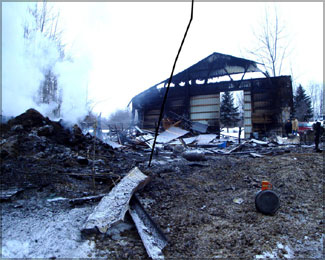 The #1 Role of Service Based Businesses: Solution Experts
The #1 Role of Service Based Businesses: Solution Experts
A product is a physical thing. You can see it and touch it. You can box up the parts or the assembled item and know how it will look, how big it is, and where you’ll put it when you get home. A service, by contrast, is intangible. You can’t mail a service to your house or carry it from a store.
In most cases, services are purchased – touch, taste, smell, and sight unseen. It’s a leap of faith based on the client’s ability to say what they want and the expert’s ability to interpret them correctly. When you go to a salon or barbershop, you can’t try out a haircut before you buy it. You tell your stylist what you want, then – hopefully – you get it. The better you describe what you want, the better the outcome. Dogs can’t tell you to take a little off the top, so how can you unlock the secret of what your (human) client wants?
By understanding that the person asking the questions controls the conversation!
When you are asking a question, it forces the other person to pay attention to you. It involves them in the conversation. If you’re doing all the talking, the listener’s mind can (and will) wander to other matters – and the end result may not be satisfactory to either of you. But the minute you say, “Let me ask you this: what if we…” the listener must pay attention because they’ll need to answer. It is an automatic reflex. The power of the words “what” and “how” is almost magical – they command a response.
You’ve now included them in the process. It’s become a team effort. You want to get the client on your team – that’s why this conversation is so important. When you ask questions, you show compassion and concern for the needs of the client and their pet. It helps build rapport. It also allows you to get valuable information from the client.
On average, a person can speak at about 250 words a minute while a person who is listening can think at about 1200 words a minute. So, if you are doing all the talking, the client has a great deal of time to figure out what they may not like about what you are saying, thus giving them an opportunity to complicate the situation! Not only are they manipulating the conversation out of your control, they haven’t heard a thing you’ve said!
How do you develop an effective line of communication with your clients?
Find a Solution in 5 Simple Steps
1) Make observations. Let your senses guide you when your client walks in. How does the pet look? How does it smell? Do you hear the ticking of nails on your floor? Don’t stop there – observe the human client, as well. Is the dog owner elderly or did s/he come in with small children? This might indicate that a nail filing service might be beneficial to protect sensitive skin. Let common sense, experience, and intuition guide your line of questions. Remember – you’re a problem solver. The more observant you are, the easier it is to find solutions.
2) Be a detective. This step involves your observations in Step 1 and takes them to another level. Gather clues from what the client tells you and what they don’t. Use your experience and expertise to find solutions that go deeper than the cosmetic.
3) Filter your data. Ask basic questions like, “Were you thinking of a thorough bath and brush for ‘Fluffy’ today or more of a full haircut?” Let the client talk. Then listen. This will help form an overall rough picture in your mind of the outcome*. Think of this as a sketch to your finished masterpiece.
4) Pinpoint focus to 5 areas of the pet+. Ask more specific questions about these key aspects of the pet so you can make a better decision about how they should be styled. This will provide details that fill out the sketch. The areas of the body pet are:
- Overall body
- Head
- Ears
- Legs/feet
- Tail
5) Offer limited choices. Now that you know what you can (and maybe should) do for the pet, I personally suggest limiting options to two possibilities. Paint your picture back to the client to show you understand what they want and how it should look. This also demonstrates that you have listened to them and care about what they have to say. After all, isn’t that what you expect when you’re the customer? Make these options your best two – offering more just means spending more time narrowing the field from those that will have less favorable outcomes, anyway.
Always remember, the person asking the questions controls the conversation!
Successful groomers and stylists are master problem solvers. While solving the problem, they also demonstrate concern, compassion, and respect for the pet and the owner. That’s what creates happy customers who keep coming back!
Happy trimming!
~Melissa
*Remember to start from the desired end result. My blog Begin with the End in Mind has more on this topic.
+I recommend using Theory of 5 as a guide to guiding the conversation. Understanding how to break each dog into its essential parts helps simplify the process.

 Fire safety isn’t something any of us should procrastinate on. Many of us ignore taking the basic steps we need to protect ourselves. I’ve always known professional grooming salons can be prone to fire. Until I experienced my own fire, I didn’t know how much you could do to prevent one. And even for those of us that have taken every precaution to prevent fire, unfortunate scenarios can still unfold.
Fire safety isn’t something any of us should procrastinate on. Many of us ignore taking the basic steps we need to protect ourselves. I’ve always known professional grooming salons can be prone to fire. Until I experienced my own fire, I didn’t know how much you could do to prevent one. And even for those of us that have taken every precaution to prevent fire, unfortunate scenarios can still unfold.